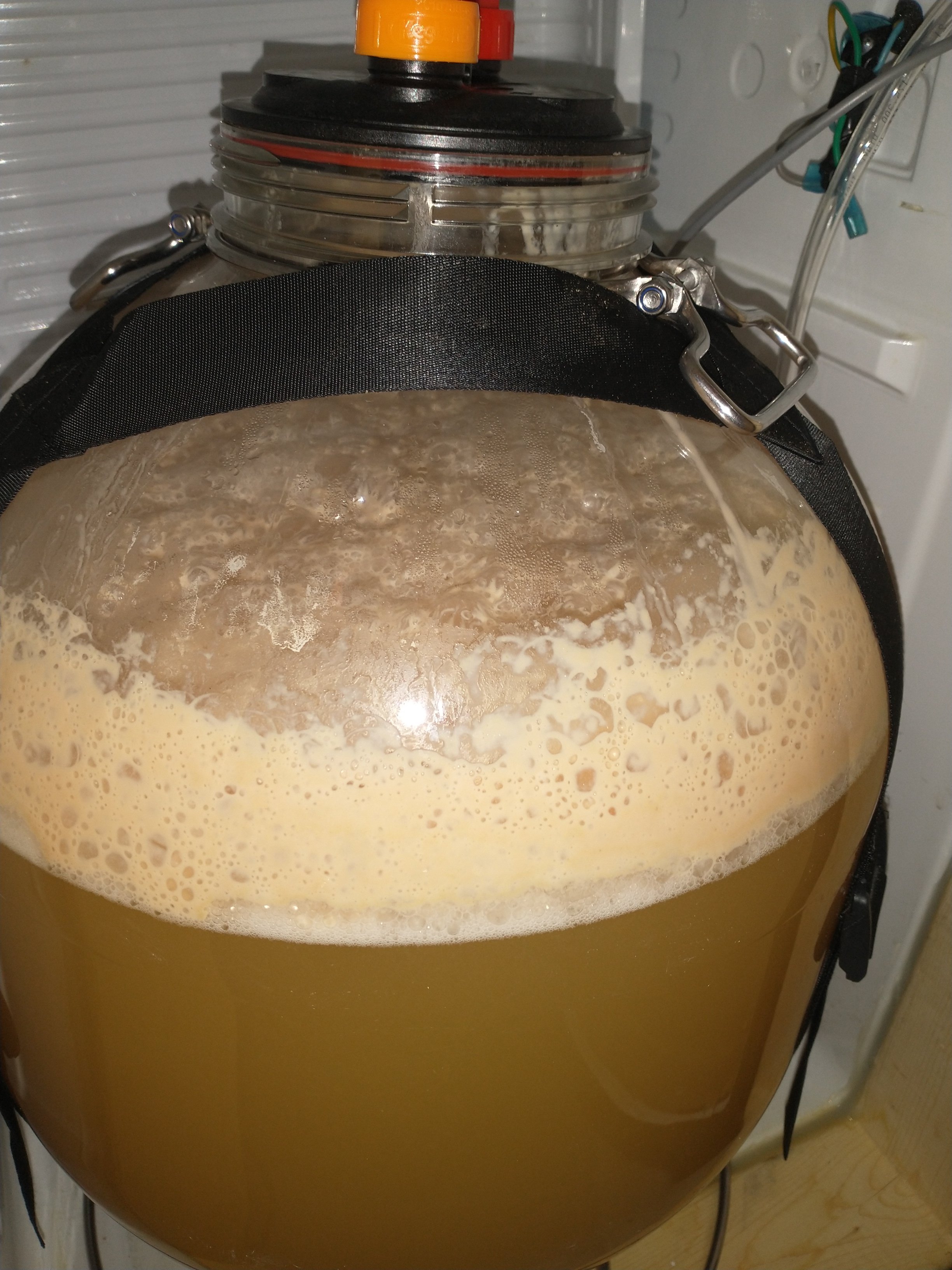Just look at it and try not to smile.




Before I got the fermzilla, I was almost exclusively top cropping. This is the first brew I've done in it with a real top cropping yeast, so I went ahead and skimmed (I don't ferment under pressure). It really is the most amazing phenomenon. You get perfect slurry that will sit in the fridge for weeks and still take off like a rocket when repitched.What's even more fun is when you actually DO top crop. I like doing that on hefeweizens and Belgian beers. Though I don't do it as much as I used to especially since I've been pressure fermenting in kegs. But I might change it up...
I spent the first about 5 years of my brewing career afraid to harvest my own yeast because it seemed so advanced and risky to me. Silly looking back on it, but when I finally did do it, I thought, well why did I make such a big deal of that? Nowadays, if I am fermenting under pressure, I just keg a beer, then run new wort into the fermenter. I do the same for my non-pressure fermented batches too, but I do it less times. I think 4 beers is my max out of one fermenter that I didn't pressure ferment.Before I got the fermzilla, I was almost exclusively top cropping. This is the first brew I've done in it with a real top cropping yeast, so I went ahead and skimmed (I don't ferment under pressure). It really is the most amazing phenomenon. You get perfect slurry that will sit in the fridge for weeks and still take off like a rocket when repitched.
I think back to how much trouble I had when I first started brewing, and much of it was due to weak fermentations. Back then it was accepted wisdom that harvesting yeast was an advanced procedure that required a bunch of equipment and precision. I would have gotten off to a much better start just by using a good top cropping yeast, a big spoon, and a Mason jar.
I've been doing the same--after racking I close and refrigerate the fermenter, then on brew day I scoop out 3/4 of the yeast and run new wort in. Usually I do about 3 batches on a pitch, depending.I spent the first about 5 years of my brewing career afraid to harvest my own yeast because it seemed so advanced and risky to me. Silly looking back on it, but when I finally did do it, I thought, well why did I make such a big deal of that? Nowadays, if I am fermenting under pressure, I just keg a beer, then run new wort into the fermenter. I do the same for my non-pressure fermented batches too, but I do it less times. I think 4 beers is my max out of one fermenter that I didn't pressure ferment.
I brew more lagers than anything and you can't top crop those. So, I don't do it very often.











I just plan to keg a beer during the brew session, usually during the mash. If it's under pressure, I'd feel OK about kegging it one day, keeping the fermenter cold, then racking new wort on top in the following days. I wouldn't let it sit for too long though I don't think.I've been doing the same--after racking I close and refrigerate the fermenter, then on brew day I scoop out 3/4 of the yeast and run new wort in. Usually I do about 3 batches on a pitch, depending.